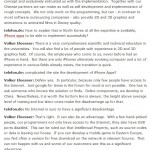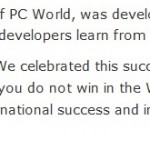Learn more about Koryo Tours at their web page.
New Trips departing from Pyongayng
Be one fo the firts visitors to the DPRK’s second city – newly opened to Koryo Tours’ tourists- Hamhung, the second largest city in North Korea and a major industrial hub on the East Coast of the Korean peninsula, Previously the only foreigners who had been to this remote and very different part of the country were East Germans who participated in the post-war reconstruction of the area’s industry, NGO staff working on projects in the city, and the occasional diplomat or sailor. In May, however, Koryo Tours’ Simon Cockerell became the first tourist ever to go there since Liberation from Japan in 1945. Koryo Tours is pleased to be able to offer this destination to group and independent tourists staying in the city centre or at the nearby Majon beach. Among the places to visit are the giant Hamhung Grand Theatre (the city’s largest building that dominates the skyline), the Hungnam fertiliser factory (where Kim Il Sung made the remark “fertiliser is rice, and rice is communism”), the home of Ri Song Gye (a notable king of ancient Korea), and much more besides. Find more about our independent tours here
Pyongyang to Hamhung is a few hours by road via the port city of Wonsan, so this is not a daytrip destination; but, for pervious visitors or people staying for more than a few days in the DPRK, this is a very good place to head to – amazing views of the countryside all the way there and back contribute to a feeling that you have visited somewhere very special. An unforgettable addition to any tour.
VISIT OUTER MOUNT KUMGANG – In addition to our opening of Hamhung as a destination for tourists, there are more places on DPRK’s East Coast that are now possible to visit; including – for the first time from North Korea – the Hyundai-run resort of Outer Kumgang. This has been closed to tourists who previously went there in their thousands from the South since an incident in 2008, where a tourist was shot by a soldier in mysterious circumstances. Since then the agreement between the government of North Korea and Hyundai – who had leased the area for tourists – has collapsed and it isnow possible to visit (although not stay overnight) from the North. Some stunning hiking trails, within what is justly considered Korea’s most beautiful mountain range, can be embarked upon. Also a visit to the serene and peaceful Samil Lagoon is a must. A visit here takes the best part of a day for any tour already at the East Coast and is a must for anyone interested in seeing some of the most remarkable natural landscapes in East Asia. Good for getting a bit of exercise after the long drive to the East Coast as well!
New Trips to the DPRK’s North East
RASON INDEPENDENT TOURS AVAILABLE – On the subject of the Rason area of North Korea, we are now offering independent tours to this area and have a new page of our website dedicated to this soon. Koryo Tours is the only western travel company ever to have been to Rason, so do feel free to ask us any questions at all; very few people have even heard of this place, let alone thought about going so if you want reliable advice and information, you know who to call! Full details and information about all the options we offer are available at the above link. Please have a look and let us know if you fancy it. The tour is unforgettable and very unlike the usual areas of the DPRK that we visit. Also it’s an amazing boast to have been there if you’re looking for a great travel story; the least visited part of the least visited country in the world! [email protected] for more info!
DPRK’s North East and Russia
THE TUMAN TRIANGLE- CHINA/DPRK/RUSSIA – In July we embarked on a brand new tour available exclusively through Koryo Tours. We call it the Tuman Triangle tour as it includes visits to three different countries in the region of the Tuman River (Tumen in China for all the pedants!). The route that our pioneering group of 18 took was a flight to Yanji in NE China’s Jilin province, then to the North Korean free trade zone of Rason (previously known as Rajin-Sonbong, a place where western tourists are almost unheard of but which Koryo tours have been visiting since 1996). We spent 4 days in the area doing a diverse range of activities such as seeing ports and seafood factories, playing beach football against Russian railway engineers, shopping in a public market – the only place this can be done in North Korea – going to the obligatory revolutionary sites, visiting the doctors (!) and local kindergartens, going to a deserted casino, doing a boat trip around the nearby islands, and more!
From DPRK we became the first tourists ever to cross into Russia by train to the town of Khasan and then spent a couple of days in the Russian countryside relaxing and taking a boat trip to a fascinating island in a nature reserve where abandoned WWII bases now provide nesting places for seagulls, before heading to Vladivostok by ferry and touring that previously-closed city and having free time to experience the delights and sights of the Russian Far East. We even made it to a Russian second division football match (Luch Energiya beat Belograd Salut 2-0 in case you’re interested!) before flying back to Beijing to complete this brand new and utterly unique itinerary.
The tour was a great success and we will be offering this again a couple of times next year. Dates and details will go online in a few weeks but do drop us a line on if you’d like to register an early interest; we aim to expand this tour even more for 2011.
A WILD AND MAGNIFICENT TRIP IN 2011 We will have an optional extension that will go to the remote Russian city of Magadan (infamous for Stalin’s gulags) – from Chollima to Kolyma! – as well as to the volcanic peninsula of Kamchatka. If you like the sound of this, then get in touch now! This tour, exclusively available from Koryo Tours will just get better and better. Join us if you want a completely different kind of holiday, and this sounds like your kind of thing!
4. Last chance to see Turkmenistan before the changes
TURKMENISTAN TOUR NOVEMBER 2010 – With the recent news that the Arch of Neutrality in Central Ashgabat is being torn down and replaced with something yet to be confirmed, the plan to relocate Central Asia’s largest market (the anarchic Tolkuchka Bazaar) to a sterile new location, and President Berdymuhammedov’s statement that he wants the amazing Darvaza gas crater to be extinguished and filled-in, it definitely seems like this is the time to visit, and see Turkmenistan at its weirdest and most unique. It will probably take at least a few months for the gas crater to be removed, (it’s the single most remarkable thing you will ever see; look for videos on YouTube for proof and bear in mind, they do not do it justice!) so and camp next to the strangest accidentally-formed attraction in the world! Full tour details for this trip can be found at http://www.koryogroup.com/turkmenistan/tours.html and the tour can be started from a variety of destinations.
We have a lot more plans for additions to this November tour so if you’ve been thinking about going to Central Asia’s most enigmatic country, then now may be the time. Drop us a line for more information and we hope you can be there to see it with your own eyes!


